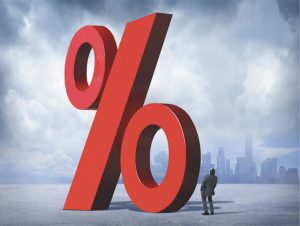By Carl Engelking


You can blame inflation for that.
Inflation, quite simply, describes the pace of price increases for the goods and services we purchase every day. In the United States, prices have on average risen 2.2 percent annually since 1988, when Federal Reserve Chairman Paul Volker made it his mission to root inflation from the economy. Since World War II, there have been just five periods when inflation exceeded 5 percent annually for an extended time.
Few people want to pay more for the exact same items from one year to the next, which is why inflation tends to be a financial boogeyman. But inflation’s rep has, perhaps, been maligned. Like most things in life, a little inflation can be a good thing — it’s a sign of a healthy economy. If you own a home, who doesn’t like to see its value increase over time? However, too much inflation (or none of it at all) can be unhealthy.
But why do prices tend to rise over time in the first place?
What causes inflation?
There are two broad forces that drive prices higher:
Demand-pull inflation
This occurs when demand for goods far exceeds the capacity to produce them, which was the case during the post-WWII inflationary period. On a micro-scale, demand-pull inflation occurs every year during the Super Bowl. Ticket prices and the price paid for commercials jump to exorbitant levels because so many people want to go to the game or advertise during it, but there simply aren’t enough seats or commercial breaks to accommodate everyone. Still, there are enough people who will pay $4,000 or more (the cheapest Super Bowl ticket in 2021) to fill every seat, or $5.6 million for a 30-second commercial.
Thought of another way, demand-pull inflation occurs when there’s too many dollars chasing a limited number of goods (seats in a stadium or limited commercial breaks). Rapidly increasing the money supply in the economy tends to fuel demand-pull inflation as there are more dollars chasing a finite amount of goods and services.
Cost-push inflation
This occurs when input costs rise and are then passed down to consumers, which was largely the case during the oil shocks of the 1970s. Higher labor costs or a spike in oil prices and other raw materials can trigger cost-push inflation. These days, a shortage of truck drivers and rising oil prices have made labor and fuel more expensive for companies that move food and other products around the world, for example. Ultimately, those added input costs for businesses are passed onto consumers in the form of higher prices, because most physical items we buy require labor and energy to get to your home.
At any given moment, both dynamics could be playing out to various degrees in different sectors of the economy. We’ve been seeing that happen through much of 2021. Supply chain logjams and labor shortages have limited the supply of goods and services amid a massive wave of demand (demand-pull inflation) from a “return to normal” following the lifting of large-scale COVID-19 restrictions implemented in 2020. At the same time, supply chain logjams and rising material costs (cost-push inflation) have also lifted prices.
Our own inflation expectations
Interestingly, if consumers and businesses believe inflation is going to accelerate, that can reflexively drive real inflation higher. If you’re in the market for a new car and expect prices to rise 5 percent or more next year, you’ll probably want to purchase a car sooner than later. Now, expand that to millions of other people in the market for a car. If consumers widely believe cars will be more expensive next year, fewer people will want to delay that purchase. In that scenario, we may end up with demand-pull inflation as current demand for cars (people who want to buy before prices rise) and exceeds supply as consumers rush en masse to buy before prices rise. Of course, there are countless factors that can impact price, but expectations for inflation are certainly a component. That’s why the Fed works hard to anchor inflation expectations with regular forecasts and inflation targets (currently, the Fed is targeting 2 percent average inflation).
How is inflation measured?
How we measure inflation isn’t without debate, but the U.S. Bureau of Labor Statistics accomplishes it by tracking a common basket of goods purchased by an “urban consumer”. That includes utilities, medical care, shelter, fuel and food. Core CPI, for example, strips out more volatile components, such as fuel, to reveal a longer-term mean for price increases. It’s measured similarly in other nations around the world.
The Federal Reserve’s preferred metric is so-called Core PCE (or core personal consumption expenditures). Core PCE tends to be less volatile than Core CPI, but both capture the underlying trend in prices.
Controversy arises in whether the basket of goods truly reflects consumer tastes and may over- or under-estimate actual price increases. There are also indexes that track the prices producers and businesses pay for labor, which is a leading indicator of prices consumers will likely pay.
Inflation: The good
Moderate inflation is a reflection of a healthy economy. Sure, we’re paying more for things, but those prices reflect higher levels of consumption, rising wages for workers and higher levels of investment in businesses. Prices rise because there’s healthy demand for goods and services, and that in turn spurs investments in productivity and labor, which reflexively spurs more demand.
Inflation also encourages borrowing and lending. For borrowers, inflation allows them to pay back their loans over time with dollars that are less valuable than when they took out the loan in the past. On a massive scale, inflation makes it easier for the U.S. government to pay back its debts.
Inflation: The ugly
Of course, inflation has an ugly side. If prices are rising too rapidly, that can be a sign of an unhealthy economy. Inflation is a big concern for retirees who are no longer getting pay raises that can keep pace with CPI or PCE. If inflation rises 8 percent (very high) in one year, and a person’s retirement portfolio only grows 4 percent, their nest egg effectively shrunk 4 percent (not even factoring in spending). That’s why a good retirement plan will build in measures to account for rising prices.
Rapid inflation may also be a sign that an economy has maximized its output and literally cannot produce enough goods and services to satisfy demand.
Deflation, the opposite of rising prices, is also detrimental to an economy. As prices fall, it reduces the margins businesses can collect on inventories, for example. If margins compress enough, some businesses may no longer be profitable and either cut costs or go under (imagine selling something for $5 that cost $6 to make). Deflation also makes it more difficult for the government to pay back debt, because less revenues are generated from the goods and services produced in the economy (you now have $0.95 to pay back every $1 of debt).
How inflation is kept in check
There are two primary forces that keep inflation within a “Goldilocks” zone.
Productivity enhancements
When businesses can produce goods faster and more efficiently, they can satiate demand without having to raise prices. The difference between demand and the economy’s productive capacity is known as the output gap. When there’s a large gap, that means there’s plenty of excess capacity in the economy to meet demand. When that gap closes, that’s a signal demand has outstripped the economy’s ability to meet demand and prices rise.
Interest rates
The Federal Reserve can also apply downward pressure on prices by raising interest rates. Raising rates makes it more costly to borrow, so demand for loans declines. In effect, fewer dollars flow through the economy because fewer businesses and consumers are taking on debt to purchase equipment or products. Fewer dollars in the economy can, in turn, slow demand and ultimately moderate prices.
Accounting for inflation in your plan
Now, this summary is a very top-level, simplified view of inflation. The economy is complex. The U.S. government, for example, put artificial price controls on products and services during WWII and the Korean War, which affected supply and demand dynamics. There’s also no guarantee raising interest rates or other policy measures will successfully tame inflation.
Regardless, inflation is certainly worth accounting for in your financial plan. If inflation headlines have you thinking about your future, a financial representative can help you build inflation-fighting strategies into your long-term plan.
To register for our upcoming FREE educational dinner event, please call
Sara at 941-925-2121
Ruth’s Chris
November 30th and December 2nd
at 6:00pm
VIMVEST FINANCIAL
941-925-2121
www.vimvestadvisors.com
 Southwest Florida's Health and Wellness Magazine Health and Wellness Articles
Southwest Florida's Health and Wellness Magazine Health and Wellness Articles

